Taking sustainable actions
To reduce the environmental impact of their activities, the companies operating at Europe’s spaceport have set up an efficient and sustainable management system geared to producing renewable energy, reducing greenhouse gas emissions, optimising energy consumption and improving waste management.
CNES is responsible for protecting the environment at Europe’s spaceport. Naturally, it has pledged to reduce the footprint of its activities and projects.
Sustainable procurement, producing renewable energy, optimising consumption, limiting emissions and improving waste management… the sustainable development approach is an integral part of every activity carried out on site and meets the 3 objectives of the CNES CSR Policy.
Like CNES, the other companies that operate at Europe's spaceport make sustainable choices with regard to their daily consumption of paper, plastic, water and energy.
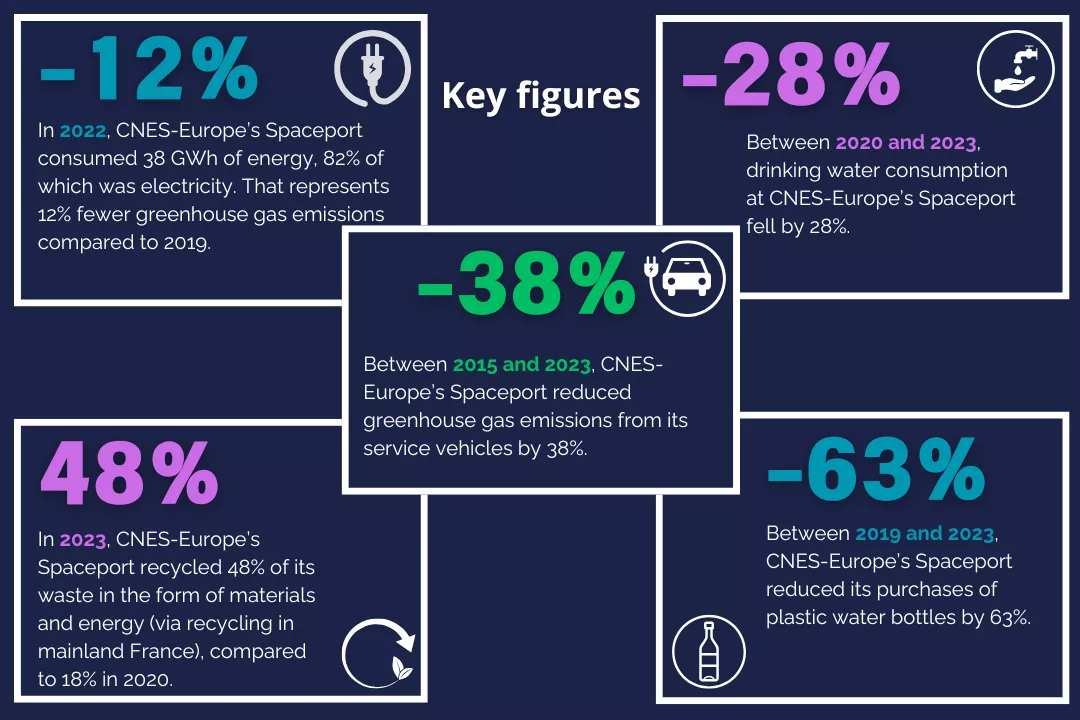
Switching to renewable energies
As part of its low-carbon strategy, CNES is working to improve the energy consumption of its facilities at Europe’s spaceport by switching to renewable energies.
Both technical and administrative buildings account for a major share of the environmental footprint at Europe’s spaceport.
Air conditioning alone accounts for 60% of energy consumption. It is required to counter the ambient humidity and create comfortable working conditions. As a result, all new buildings at Europe’s spaceport comply with more environmentally friendly construction standards. With improved thermal insulation, the use of low-energy lighting and solar panels, these newer buildings reduce their electricity consumption and produce their own energy.
Existing buildings are also being upgraded to reduce energy consumption. Satellite preparation facilities are a good example. Because their activity requires very stringent temperature and humidity conditions, their air conditioning system was completely replaced by an automated system in 2024. Via a new supervision system compatible with the remote monitoring and management system deployed at the base, it enables consumption to be closely monitored and adapted as required (day, night, depending on the season).
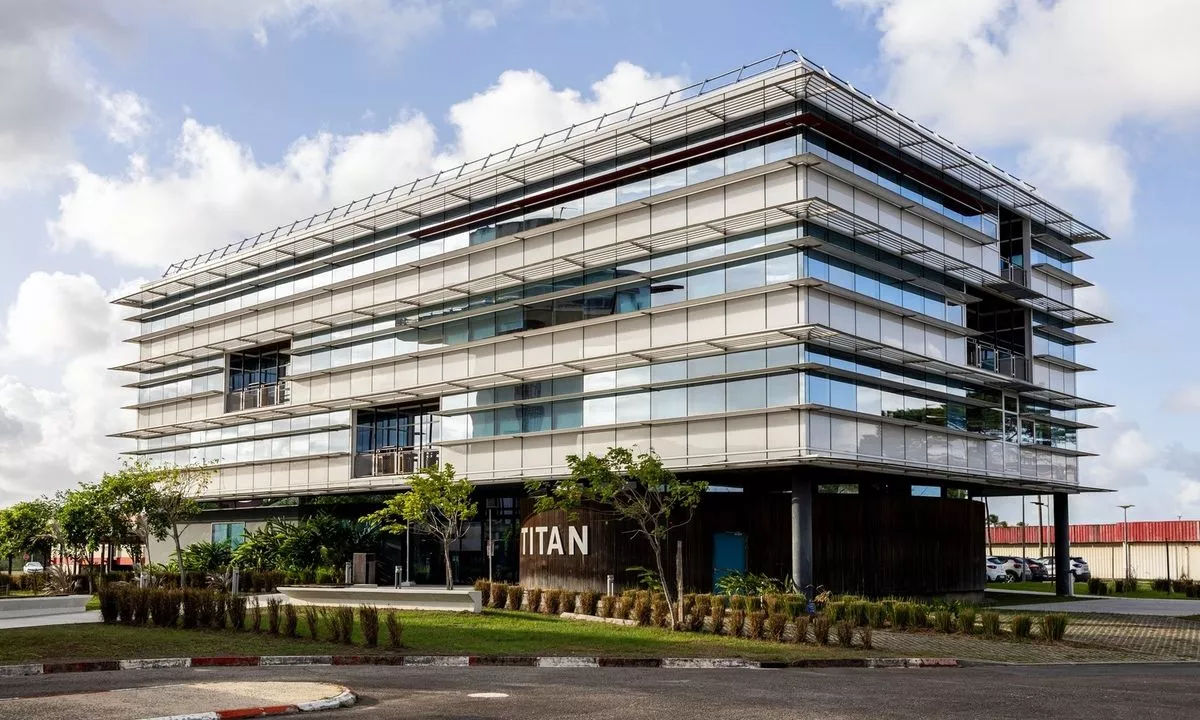
Titan, one of the new sustainable, innovative buildings at Europe’s spaceport.
By 2030, CNES will have integrated into the energy network at Europe’s spaceport, enabling it to generate its own electricity :
Two solar farms, one of which was delivered in 2024, will make the most of French Guiana's abundant sunshine. Spanning 5 hectares each, they will generate around 10 megawatts. The two farms will be spaced apart to avoid having their production reduced simultaneously by a single cloud mass.
Europe’s Spaceport completes its commitment to the energy transition with HYGUANE (Hydrogène guyanais à neutralité environnementale, or Environmentally neutral hydrogen from Guiana), the green hydrogen production project, and BIFROST (Bio Fuel for Rocket Operation in Space Transport), the green methane production project. Those projects will make it possible to decarbonise the production of fuels for launchers, which are major consumers of hydrogen and methane.
What about the other companies at the Spaceport?
The other companies that operate at Europe’s spaceport are also tackling the air conditioning issue: Arianespace has managed to reduce its consumption by 5% since 2014, and is sustaining the trend despite adding new buildings.
At Europropulsion, work has been done to reduce electricity consumption by 30% compared to 2022. For example, the Italian company has focused on solar energy, renovating buildings and installing solar panels for their energy supply.
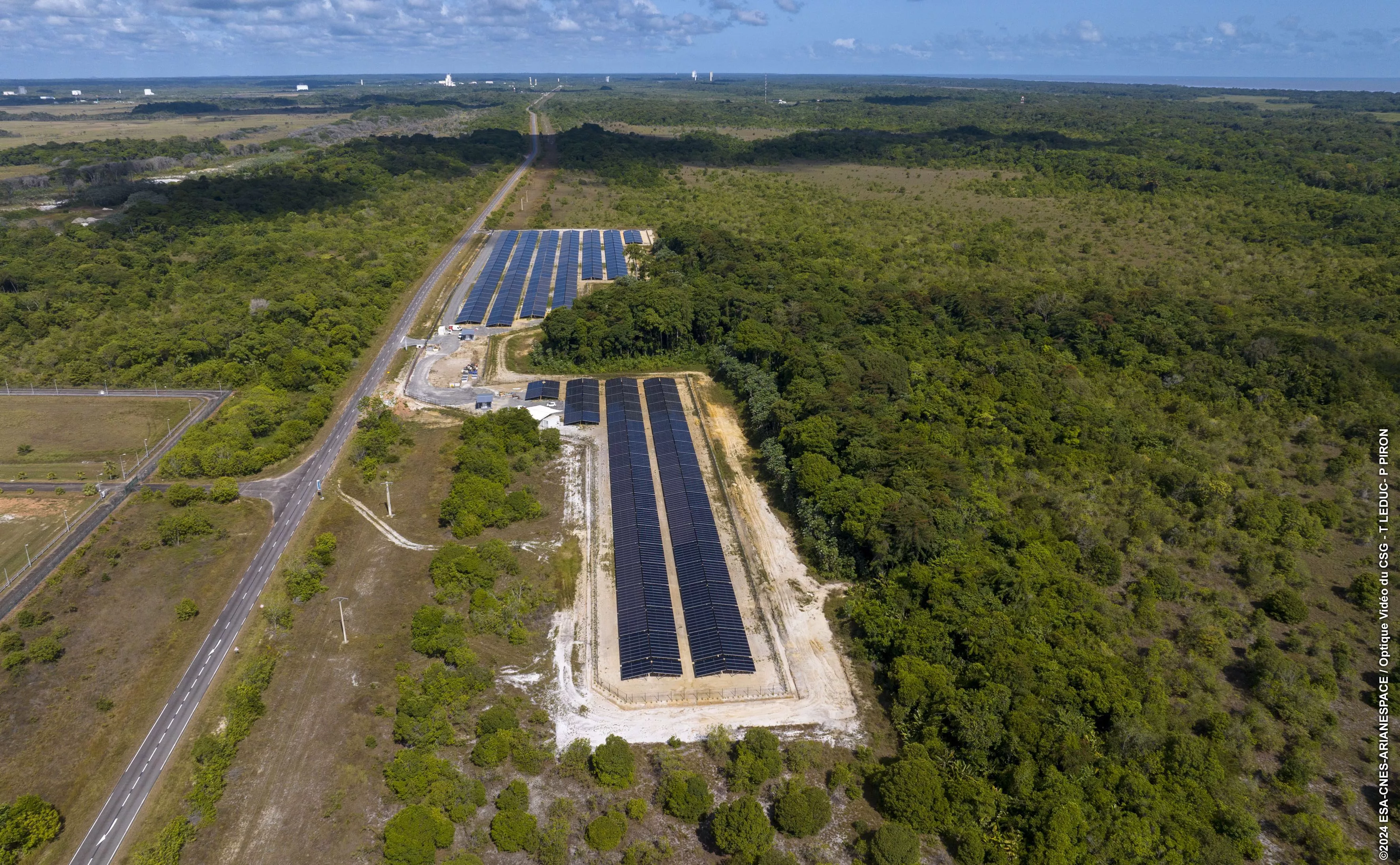
The first solar farm at Europe’s spaceport.
Reducing emissions due to business travel
To reduce the need to travel, employees of Europe’s spaceport have access to video conferencing equipment and messaging software for remote working. Those remote communication means replace on-site work at the spaceport whenever possible, and also lead to a reduction in regional and international travel.
For activities that need to be carried out on site, CNES provides employees with a fleet of electric vehicles. A dozen charging stations are available for those vehicles.
CNES promotes shared transport and offers all employees of Europe’s Spaceport daily bus services between the spaceport and Kourou, as well as services to Cayenne Island. Employees are also encouraged to cycle to work, and are provided with showers, bike shelters and, since 2020, a cycle path between Europe’s Spaceport and Kourou.
Electric charging stations are made available to employees for charging their personal hybrid or electric vehicles, via a subscription.
What about the other companies at the spaceport?
At MT Aerospace, solar cells are being fitted to vehicles to power the devices of employees travelling to isolated locations, replacing the generators and batteries currently used.
While a number of companies such as Go for Green and Europropulsion are switching to electric vehicles, others such as EES-Clemessy are working to reduce the impact of transporting equipment. The objective involves grouping shipments, especially deliveries of equipment from mainland France.
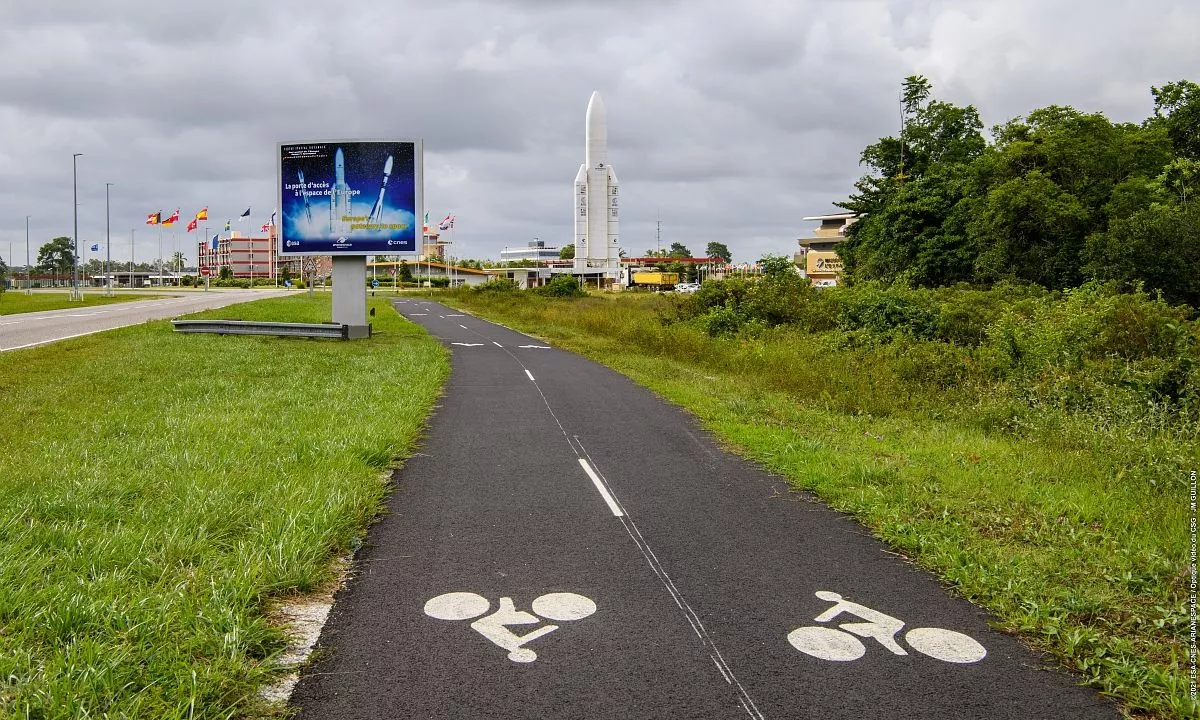
The cycle path between Kourou and Europe’s spaceport was completed in 2020.
Reducing consumption of natural resources
After renovating its buildings and replacing its drinking water meters and valves, CNES is now implementing measures to reduce its water consumption. They include closer monitoring of leaks.
What about the other companies at the spaceport?
At Arianespace, precise monitoring of water consumption has led to a drastic reduction: 60% less industrial water and 78% less drinking water between 2017 and 2019.
The launch operator has also introduced a new printing system, reducing paper consumption by 43%.
For Europropulsion, reducing paper consumption means going paperless, so all procedures are now consulted via tablets made available to employees.
Promoting more environmentally friendly food
CNES seeks to adopt an environmentally friendly approach for all its projects and activities. That also includes the running of the company restaurant, where it works hard to offer employees dishes made from local, fresh produce, and increasingly from organic sources.
Better waste management
In French Guiana, there are no treatment or recycling facilities (except for glass) for all waste. Some waste is sent to approved treatment centres in mainland France. But upstream, their collection, sorting by category, packaging and transport are subject to regulatory standards that CNES has to follow. Waste management at CNES is therefore outsourced to various service providers.
The different aspects of the CNES environment policy apply to the entire site on which Europe’s Spaceport is located, including the Spaceport itself, the port of Pariacabo and the Salvation Islands.
On a personal level, employees are asked to help improve waste sorting on CNES sites through everyday actions such as using the right bins and containers.
Food waste from the CNES company restaurant is also recycled at an agricultural farm run by an association that turns it into compost.
CNES is also part of the drive to reduce single-use plastic. Takeaway meals at the company restaurant are served in recyclable containers, and the sale of bottled water is gradually being replaced by water fountains and the distribution of reusable water bottles.
What about the other companies at the spaceport?
At Europe’s spaceport, each manufacturer is responsible for its own waste management.
At Europropulsion, the different types of waste are first sorted and then stored in a special area while they wait for treatment. For paper, the company has acquired a shredder and supplies the resulting residues to a local farmer.
At Air Liquide, a project is in the pipeline with the Direction Générale des Territoires et de la Mer. The aim is to offer two types of industrial waste to farmers in French Guiana: perlite and sludge from the surface treatment plant. The first, a volcanic rock used in Air Liquide's plants as insulation, can be added to soil to aerate it. The second, after being treated to eliminate toxic molecules, is rich in phosphate. Air Liquide plans to offer those products to farmers once their “environmental waste” status had been lifted.
Digital waste is another important issue. Accordingly, the EES-Clemessy group is encouraging its employees to sort their digital files, thereby freeing up space on storage servers that consume huge amounts of energy.
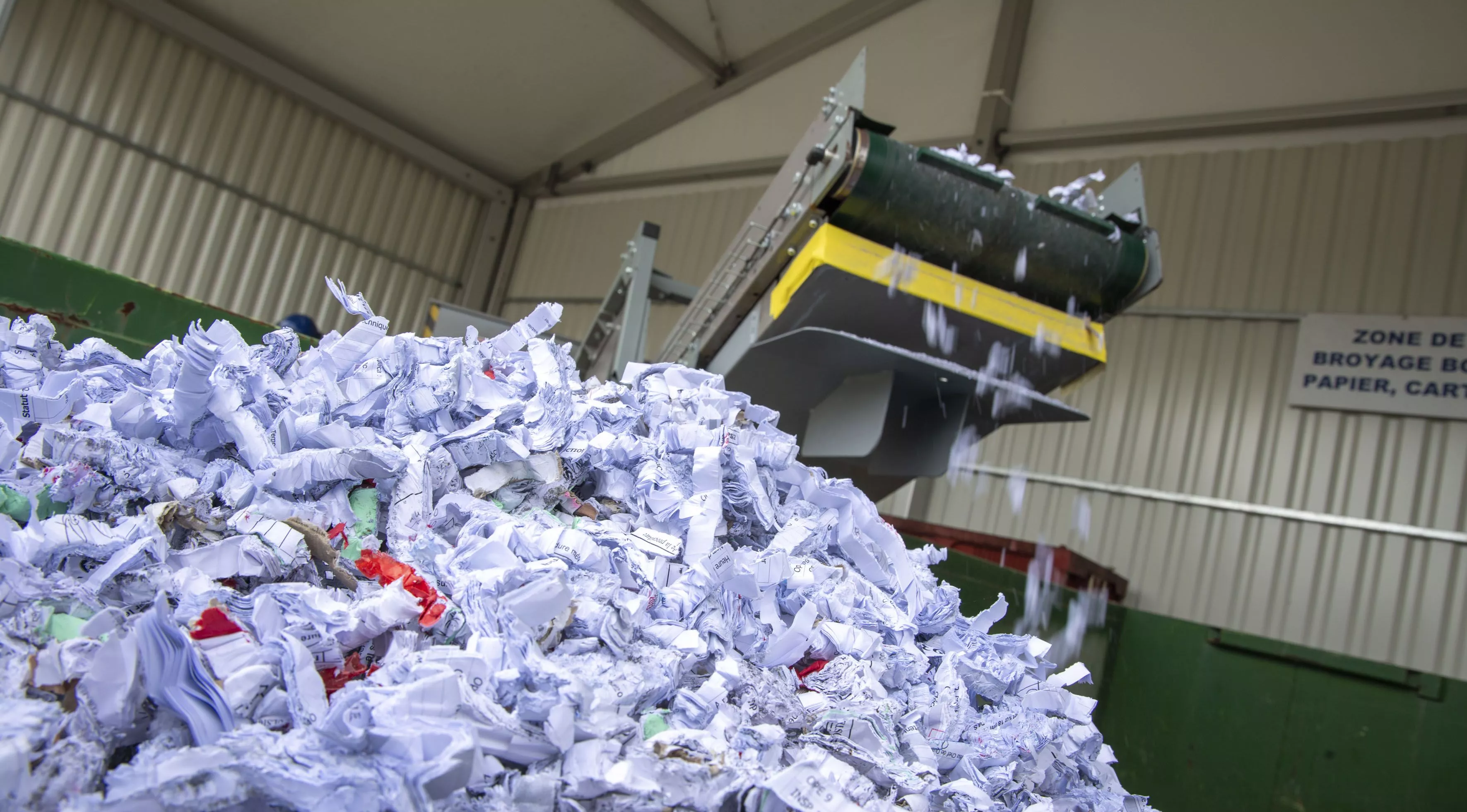
After sorting, paper from Europropulsion is shredded and given to a farmer.
Preserving biodiversity
The land on which Europe’s spaceport lies is covered by large natural areas (forest, savannah, mangrove, marsh) that are home to many animal and plant species. To preserve them, CNES has been rolling out its new biodiversity management plan for Europe’s Spaceport since 2021, a plan which earned it the Entreprise Engagée pour la Nature label. Through this document, it pledges to reuse already-developed areas for future projects, maintain its nature trails and footpaths, and conduct studies on emblematic plant and animal species.
More information on protecting biodiversity at Europe’s spaceport.
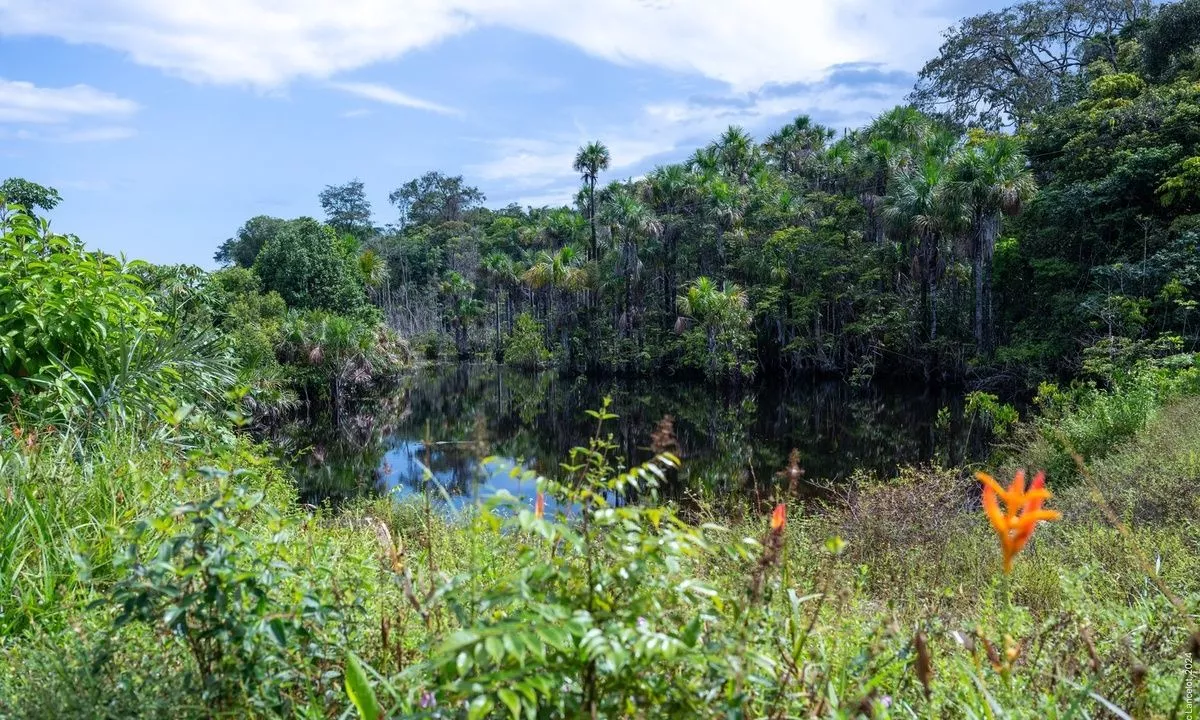
A variety of natural spaces on the land around Europe’s spaceport.